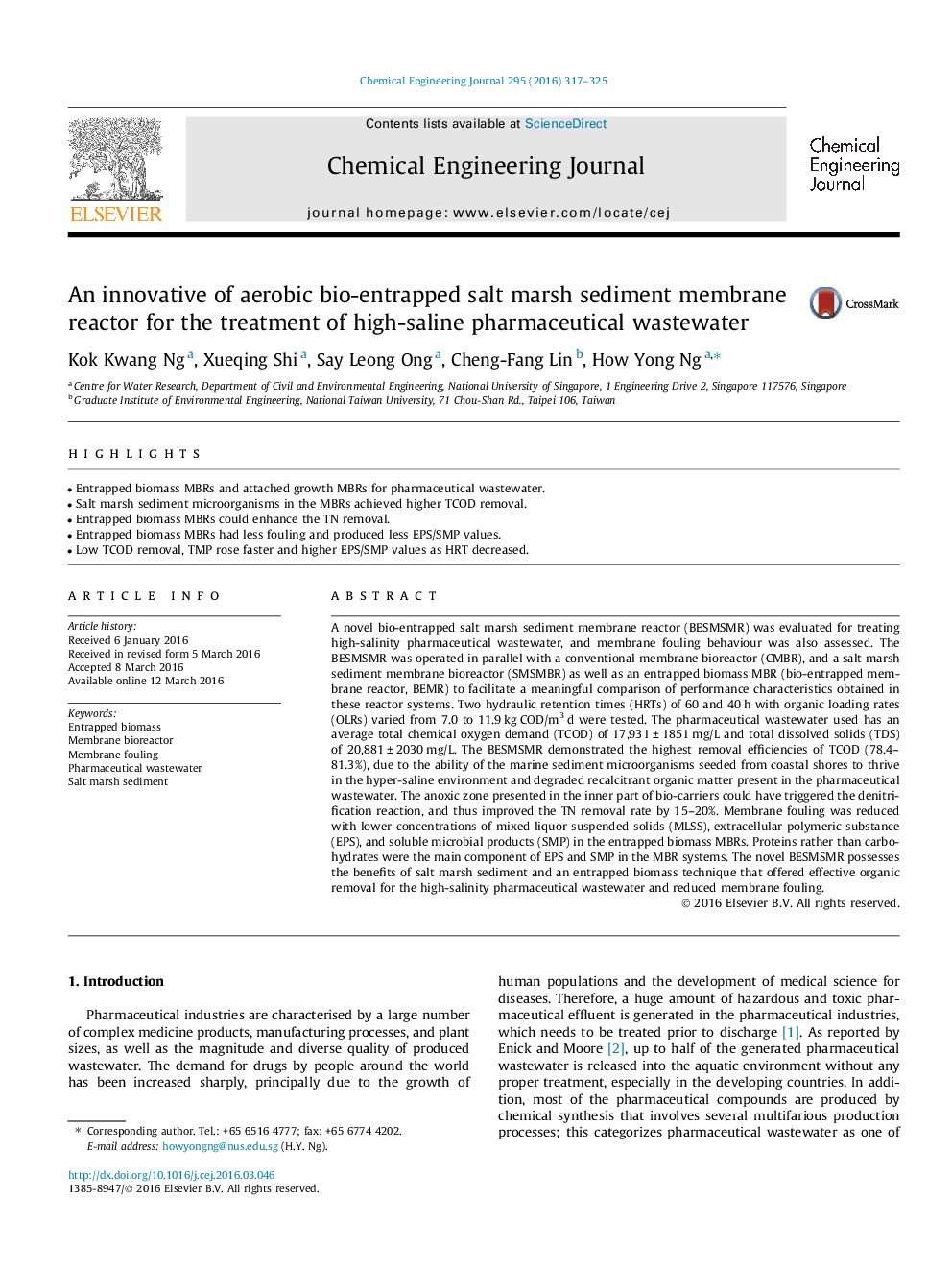| کد مقاله | کد نشریه | سال انتشار | مقاله انگلیسی | نسخه تمام متن |
|---|---|---|---|---|
| 145614 | 456345 | 2016 | 9 صفحه PDF | دانلود رایگان |
• Entrapped biomass MBRs and attached growth MBRs for pharmaceutical wastewater.
• Salt marsh sediment microorganisms in the MBRs achieved higher TCOD removal.
• Entrapped biomass MBRs could enhance the TN removal.
• Entrapped biomass MBRs had less fouling and produced less EPS/SMP values.
• Low TCOD removal, TMP rose faster and higher EPS/SMP values as HRT decreased.
A novel bio-entrapped salt marsh sediment membrane reactor (BESMSMR) was evaluated for treating high-salinity pharmaceutical wastewater, and membrane fouling behaviour was also assessed. The BESMSMR was operated in parallel with a conventional membrane bioreactor (CMBR), and a salt marsh sediment membrane bioreactor (SMSMBR) as well as an entrapped biomass MBR (bio-entrapped membrane reactor, BEMR) to facilitate a meaningful comparison of performance characteristics obtained in these reactor systems. Two hydraulic retention times (HRTs) of 60 and 40 h with organic loading rates (OLRs) varied from 7.0 to 11.9 kg COD/m3 d were tested. The pharmaceutical wastewater used has an average total chemical oxygen demand (TCOD) of 17,931 ± 1851 mg/L and total dissolved solids (TDS) of 20,881 ± 2030 mg/L. The BESMSMR demonstrated the highest removal efficiencies of TCOD (78.4–81.3%), due to the ability of the marine sediment microorganisms seeded from coastal shores to thrive in the hyper-saline environment and degraded recalcitrant organic matter present in the pharmaceutical wastewater. The anoxic zone presented in the inner part of bio-carriers could have triggered the denitrification reaction, and thus improved the TN removal rate by 15–20%. Membrane fouling was reduced with lower concentrations of mixed liquor suspended solids (MLSS), extracellular polymeric substance (EPS), and soluble microbial products (SMP) in the entrapped biomass MBRs. Proteins rather than carbohydrates were the main component of EPS and SMP in the MBR systems. The novel BESMSMR possesses the benefits of salt marsh sediment and an entrapped biomass technique that offered effective organic removal for the high-salinity pharmaceutical wastewater and reduced membrane fouling.
Journal: Chemical Engineering Journal - Volume 295, 1 July 2016, Pages 317–325
